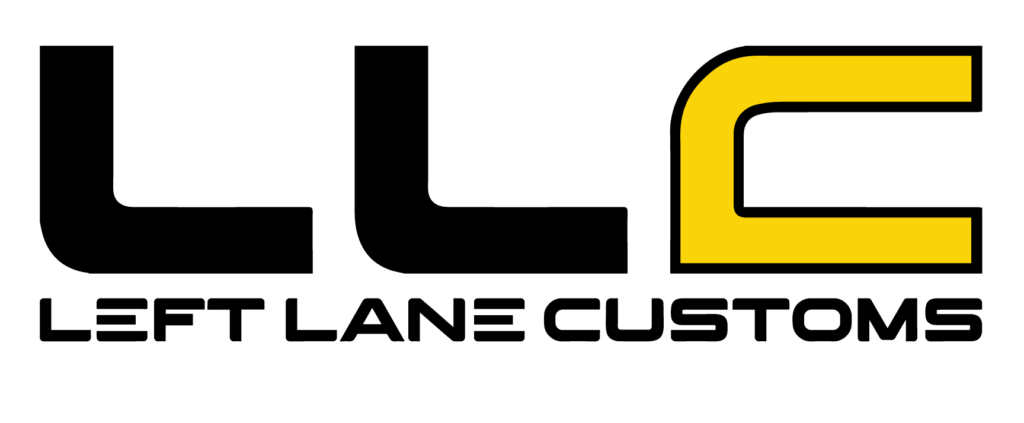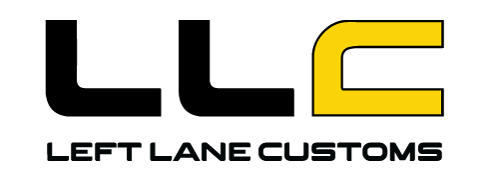
Paint Protection Film vs Ceramic Coating: The Ultimate Guide for Toronto Car Owners
When it comes to protecting your vehicle’s paint in Toronto’s challenging climate, two premium solutions stand out: Paint Protection Film (PPF) and Ceramic Coating. Both offer superior protection compared to traditional wax, but understanding their differences, benefits, and applications is crucial for making the right choice for your vehicle. This comprehensive guide will help you navigate these advanced protection options and determine which solution best meets your needs.
Understanding Paint Protection Film (PPF)
Paint Protection Film, also known as clear bra or invisible shield, is a thermoplastic urethane film applied directly to your vehicle’s painted surfaces. Originally developed for military applications to protect helicopter rotor blades, PPF has evolved into the automotive industry’s premier physical protection solution.
Modern PPF consists of multiple layers, including a clear coat that provides gloss and scratch resistance, a urethane layer that absorbs impacts, and an adhesive layer that bonds to your vehicle’s paint. High-quality films like XPEL and 3M offer self-healing properties, meaning minor scratches and swirl marks disappear with heat exposure.
The primary advantage of PPF lies in its physical protection capabilities. It acts as a sacrificial layer, absorbing rock chips, road debris impacts, and environmental contaminants that would otherwise damage your vehicle’s paint. For Toronto drivers who frequently encounter construction zones, highway driving, and harsh weather conditions, PPF provides unmatched protection against physical damage.
PPF installation requires skilled technicians who understand paint preparation, film handling, and precision cutting. Professional installation ensures proper adhesion, eliminates air bubbles, and provides seamless coverage that’s virtually invisible. The process typically takes several days, depending on coverage area and vehicle complexity.
Exploring Ceramic Coating Technology
Ceramic coating represents a revolutionary advancement in paint protection technology. These liquid polymer coatings chemically bond with your vehicle’s paint, creating a permanent protective layer that cannot be washed away like traditional wax or sealants.
Professional-grade ceramic coatings contain silicon dioxide (SiO2) nanoparticles that form a hard, glass-like surface over your paint. This creates a hydrophobic barrier that repels water, dirt, and environmental contaminants while providing exceptional gloss and depth to your vehicle’s finish.
Ceramic coating services offer multiple benefits for Toronto vehicle owners. The coating’s hydrophobic properties make washing easier, as dirt and grime slide off with minimal effort. Chemical resistance protects against road salt, bird droppings, tree sap, and other environmental hazards that can permanently stain or etch paint.
The application process requires meticulous paint preparation, including thorough cleaning, decontamination, and often paint correction to ensure optimal bonding. Professional installation is essential, as improper application can result in uneven coating, streaking, or poor adhesion. The curing process typically takes 24-48 hours, during which the vehicle must remain dry and protected.
Protection Capabilities Comparison
When comparing protection capabilities, PPF and ceramic coating excel in different areas. PPF provides superior physical protection against rock chips, scratches, and impact damage. Its thick, flexible nature allows it to absorb energy that would otherwise crack or chip paint. For high-impact areas like front bumpers, hood edges, and mirror backs, PPF offers unmatched protection.
Ceramic coating excels in chemical protection and maintenance benefits. Its hard, non-porous surface resists chemical etching from bird droppings, tree sap, and road salt. The hydrophobic properties make regular washing easier and more effective, while the enhanced gloss creates a stunning visual appearance.
Neither solution provides complete protection against all threats. PPF can be damaged by sharp objects or extreme impacts, while ceramic coating offers limited protection against physical damage. Understanding these limitations helps set realistic expectations and informs protection strategy decisions.
Durability and Longevity
Durability varies significantly between PPF and ceramic coating. High-quality PPF typically lasts 7-10 years with proper maintenance, gradually wearing away at edges and high-wear areas. The self-healing properties help maintain appearance, but eventual replacement is necessary as the film ages.
Professional ceramic coatings offer 2-5 years of protection, depending on product quality and maintenance. Premium formulations like IGL Ceramic Coating can last up to 5 years with proper care. Unlike PPF, ceramic coating doesn’t physically wear away but gradually loses its hydrophobic properties and gloss enhancement over time.
Maintenance requirements differ between solutions. PPF requires regular washing and occasional professional inspection to ensure adhesion and identify potential issues. Ceramic coating needs specific maintenance products and techniques to preserve its properties and maximize longevity.
Cost Considerations and Value
Investment costs vary significantly between PPF and ceramic coating. PPF typically costs more upfront due to material costs and labor-intensive installation. Full-vehicle PPF can represent a substantial investment, while partial coverage targeting high-impact areas offers more affordable protection.
Ceramic coating generally requires lower initial investment but may need periodic reapplication to maintain protection levels. The enhanced gloss and ease of maintenance can reduce long-term detailing costs, providing value through reduced maintenance requirements.
When evaluating costs, consider your vehicle’s value, usage patterns, and protection goals. Luxury vehicles, leased cars, and frequently driven vehicles often justify PPF investment, while ceramic coating may be more appropriate for garage-kept vehicles or those seeking enhanced appearance with moderate protection.
Combining PPF and Ceramic Coating
Many Toronto vehicle owners discover that combining PPF and ceramic coating provides optimal protection. This approach applies PPF to high-impact areas like front bumpers, hoods, and fender edges, while ceramic coating protects the entire vehicle against chemical damage and environmental contaminants.
Professional detailing services can evaluate your vehicle and recommend the optimal combination based on your specific needs and budget. Some installers apply ceramic coating over PPF, enhancing the film’s gloss and making maintenance easier.
This combined approach maximizes protection while managing costs. Critical areas receive physical protection from PPF, while the entire vehicle benefits from ceramic coating’s chemical resistance and maintenance advantages.
Climate-Specific Considerations for Toronto
Toronto’s climate presents unique challenges that influence protection choice. Winter road salt can cause chemical etching and staining, making ceramic coating’s chemical resistance particularly valuable. Summer UV exposure can fade paint and degrade protection, highlighting the importance of quality products and proper application.
Frequent temperature fluctuations can stress paint and protective coatings, emphasizing the need for professional installation and quality materials. Window tinting services can complement paint protection by reducing interior heat and UV exposure.
Spring and fall present transitional challenges, with varying temperatures and increased precipitation. Both PPF and ceramic coating help navigate these seasonal changes, but proper maintenance becomes crucial during these periods.
Professional Installation Importance
Both PPF and ceramic coating require professional installation for optimal results. DIY products may seem cost-effective but lack the durability, performance, and warranty protection of professional-grade solutions. Professional installers have the experience, tools, and environment necessary for proper application.
Professional installation includes proper surface preparation, which is crucial for both PPF adhesion and ceramic coating bonding. Contaminated or improperly prepared surfaces can lead to premature failure, regardless of product quality.
Paint correction services often precede protection installation, ensuring the paint surface is in optimal condition. This preparation step is particularly important for ceramic coating, which will permanently seal any existing imperfections.
Making the Right Choice
Choosing between PPF and ceramic coating depends on your specific needs, budget, and protection goals. Consider these factors:
Choose PPF if:
- Your vehicle faces high impact risk (highway driving, construction zones)
- Physical protection is the primary concern
- You have a high-value or leased vehicle
- Budget allows for premium protection
Choose Ceramic Coating if:
- Chemical protection and enhanced gloss are priorities
- Easier maintenance is important
- Budget is more limited
- Your vehicle is primarily city-driven
Consider Both if:
- Maximum protection is desired
- Budget allows for comprehensive protection
- Vehicle represents significant investment
- Professional recommendation supports combined approach
Maintenance and Care
Proper maintenance extends the life and effectiveness of both protection types. PPF requires regular washing with pH-neutral soaps and soft materials to prevent scratching. Avoid automated car washes with brushes, which can damage the film edges.
Ceramic coating maintenance involves specific products and techniques. Use pH-neutral shampoos and avoid harsh chemicals that can degrade the coating. Regular maintenance washes and periodic professional inspections help maximize longevity.
Full detailing services can provide professional maintenance for both PPF and ceramic coating, ensuring optimal performance and appearance throughout their lifespan.
Conclusion
Both Paint Protection Film and Ceramic Coating offer superior protection compared to traditional methods, but they serve different purposes and excel in different areas. PPF provides unmatched physical protection against impacts and damage, while ceramic coating offers excellent chemical resistance and enhanced appearance with easier maintenance.
The choice between these technologies depends on your specific needs, driving conditions, and budget. Many Toronto vehicle owners find that combining both solutions provides comprehensive protection that addresses all major threats to their vehicle’s paint.
Professional consultation and installation are essential for optimal results with either solution. Investing in quality products and skilled installation ensures your vehicle receives the protection it deserves while maintaining its appearance and value for years to come.
When it comes to protecting your vehicle’s paint in Toronto’s challenging climate, two premium solutions stand out: Paint Protection Film (PPF) and Ceramic Coating. Both offer superior protection compared to traditional wax, but understanding their differences, benefits, and applications is crucial for making the right choice for your vehicle. This comprehensive guide will help you navigate these advanced protection options and determine which solution best meets your needs.
Understanding Paint Protection Film (PPF)
Paint Protection Film, also known as clear bra or invisible shield, is a thermoplastic urethane film applied directly to your vehicle’s painted surfaces. Originally developed for military applications to protect helicopter rotor blades, PPF has evolved into the automotive industry’s premier physical protection solution.
Modern PPF consists of multiple layers, including a clear coat that provides gloss and scratch resistance, a urethane layer that absorbs impacts, and an adhesive layer that bonds to your vehicle’s paint. High-quality films like XPEL and 3M offer self-healing properties, meaning minor scratches and swirl marks disappear with heat exposure.
The primary advantage of PPF lies in its physical protection capabilities. It acts as a sacrificial layer, absorbing rock chips, road debris impacts, and environmental contaminants that would otherwise damage your vehicle’s paint. For Toronto drivers who frequently encounter construction zones, highway driving, and harsh weather conditions, PPF provides unmatched protection against physical damage.
PPF installation requires skilled technicians who understand paint preparation, film handling, and precision cutting. Professional installation ensures proper adhesion, eliminates air bubbles, and provides seamless coverage that’s virtually invisible. The process typically takes several days, depending on coverage area and vehicle complexity.
Exploring Ceramic Coating Technology
Ceramic coating represents a revolutionary advancement in paint protection technology. These liquid polymer coatings chemically bond with your vehicle’s paint, creating a permanent protective layer that cannot be washed away like traditional wax or sealants.
Professional-grade ceramic coatings contain silicon dioxide (SiO2) nanoparticles that form a hard, glass-like surface over your paint. This creates a hydrophobic barrier that repels water, dirt, and environmental contaminants while providing exceptional gloss and depth to your vehicle’s finish.
Ceramic coating services offer multiple benefits for Toronto vehicle owners. The coating’s hydrophobic properties make washing easier, as dirt and grime slide off with minimal effort. Chemical resistance protects against road salt, bird droppings, tree sap, and other environmental hazards that can permanently stain or etch paint.
The application process requires meticulous paint preparation, including thorough cleaning, decontamination, and often paint correction to ensure optimal bonding. Professional installation is essential, as improper application can result in uneven coating, streaking, or poor adhesion. The curing process typically takes 24-48 hours, during which the vehicle must remain dry and protected.
Protection Capabilities Comparison
When comparing protection capabilities, PPF and ceramic coating excel in different areas. PPF provides superior physical protection against rock chips, scratches, and impact damage. Its thick, flexible nature allows it to absorb energy that would otherwise crack or chip paint. For high-impact areas like front bumpers, hood edges, and mirror backs, PPF offers unmatched protection.
Ceramic coating excels in chemical protection and maintenance benefits. Its hard, non-porous surface resists chemical etching from bird droppings, tree sap, and road salt. The hydrophobic properties make regular washing easier and more effective, while the enhanced gloss creates a stunning visual appearance.
Neither solution provides complete protection against all threats. PPF can be damaged by sharp objects or extreme impacts, while ceramic coating offers limited protection against physical damage. Understanding these limitations helps set realistic expectations and informs protection strategy decisions.
Durability and Longevity
Durability varies significantly between PPF and ceramic coating. High-quality PPF typically lasts 7-10 years with proper maintenance, gradually wearing away at edges and high-wear areas. The self-healing properties help maintain appearance, but eventual replacement is necessary as the film ages.
Professional ceramic coatings offer 2-5 years of protection, depending on product quality and maintenance. Premium formulations like IGL Ceramic Coating can last up to 5 years with proper care. Unlike PPF, ceramic coating doesn’t physically wear away but gradually loses its hydrophobic properties and gloss enhancement over time.
Maintenance requirements differ between solutions. PPF requires regular washing and occasional professional inspection to ensure adhesion and identify potential issues. Ceramic coating needs specific maintenance products and techniques to preserve its properties and maximize longevity.
Cost Considerations and Value
Investment costs vary significantly between PPF and ceramic coating. PPF typically costs more upfront due to material costs and labor-intensive installation. Full-vehicle PPF can represent a substantial investment, while partial coverage targeting high-impact areas offers more affordable protection.
Ceramic coating generally requires lower initial investment but may need periodic reapplication to maintain protection levels. The enhanced gloss and ease of maintenance can reduce long-term detailing costs, providing value through reduced maintenance requirements.
When evaluating costs, consider your vehicle’s value, usage patterns, and protection goals. Luxury vehicles, leased cars, and frequently driven vehicles often justify PPF investment, while ceramic coating may be more appropriate for garage-kept vehicles or those seeking enhanced appearance with moderate protection.
Combining PPF and Ceramic Coating
Many Toronto vehicle owners discover that combining PPF and ceramic coating provides optimal protection. This approach applies PPF to high-impact areas like front bumpers, hoods, and fender edges, while ceramic coating protects the entire vehicle against chemical damage and environmental contaminants.
Professional detailing services can evaluate your vehicle and recommend the optimal combination based on your specific needs and budget. Some installers apply ceramic coating over PPF, enhancing the film’s gloss and making maintenance easier.
This combined approach maximizes protection while managing costs. Critical areas receive physical protection from PPF, while the entire vehicle benefits from ceramic coating’s chemical resistance and maintenance advantages.
Climate-Specific Considerations for Toronto
Toronto’s climate presents unique challenges that influence protection choice. Winter road salt can cause chemical etching and staining, making ceramic coating’s chemical resistance particularly valuable. Summer UV exposure can fade paint and degrade protection, highlighting the importance of quality products and proper application.
Frequent temperature fluctuations can stress paint and protective coatings, emphasizing the need for professional installation and quality materials. Window tinting services can complement paint protection by reducing interior heat and UV exposure.
Spring and fall present transitional challenges, with varying temperatures and increased precipitation. Both PPF and ceramic coating help navigate these seasonal changes, but proper maintenance becomes crucial during these periods.
Professional Installation Importance
Both PPF and ceramic coating require professional installation for optimal results. DIY products may seem cost-effective but lack the durability, performance, and warranty protection of professional-grade solutions. Professional installers have the experience, tools, and environment necessary for proper application.
Professional installation includes proper surface preparation, which is crucial for both PPF adhesion and ceramic coating bonding. Contaminated or improperly prepared surfaces can lead to premature failure, regardless of product quality.
Paint correction services often precede protection installation, ensuring the paint surface is in optimal condition. This preparation step is particularly important for ceramic coating, which will permanently seal any existing imperfections.
Making the Right Choice
Choosing between PPF and ceramic coating depends on your specific needs, budget, and protection goals. Consider these factors:
Choose PPF if:
- Your vehicle faces high impact risk (highway driving, construction zones)
- Physical protection is the primary concern
- You have a high-value or leased vehicle
- Budget allows for premium protection
Choose Ceramic Coating if:
- Chemical protection and enhanced gloss are priorities
- Easier maintenance is important
- Budget is more limited
- Your vehicle is primarily city-driven
Consider Both if:
- Maximum protection is desired
- Budget allows for comprehensive protection
- Vehicle represents significant investment
- Professional recommendation supports combined approach
Maintenance and Care
Proper maintenance extends the life and effectiveness of both protection types. PPF requires regular washing with pH-neutral soaps and soft materials to prevent scratching. Avoid automated car washes with brushes, which can damage the film edges.
Ceramic coating maintenance involves specific products and techniques. Use pH-neutral shampoos and avoid harsh chemicals that can degrade the coating. Regular maintenance washes and periodic professional inspections help maximize longevity.
Full detailing services can provide professional maintenance for both PPF and ceramic coating, ensuring optimal performance and appearance throughout their lifespan.
Both Paint Protection Film and Ceramic Coating offer superior protection compared to traditional methods, but they serve different purposes and excel in different areas. PPF provides unmatched physical protection against impacts and damage, while ceramic coating offers excellent chemical resistance and enhanced appearance with easier maintenance.
The choice between these technologies depends on your specific needs, driving conditions, and budget. Many Toronto vehicle owners find that combining both solutions provides comprehensive protection that addresses all major threats to their vehicle’s paint.
Professional consultation and installation are essential for optimal results with either solution. Investing in quality products and skilled installation ensures your vehicle receives the protection it deserves while maintaining its appearance and value for years to come.
Visit us on Facebook at our Facebook Link and our Instagram Link. Left Lane Customs Inc.


